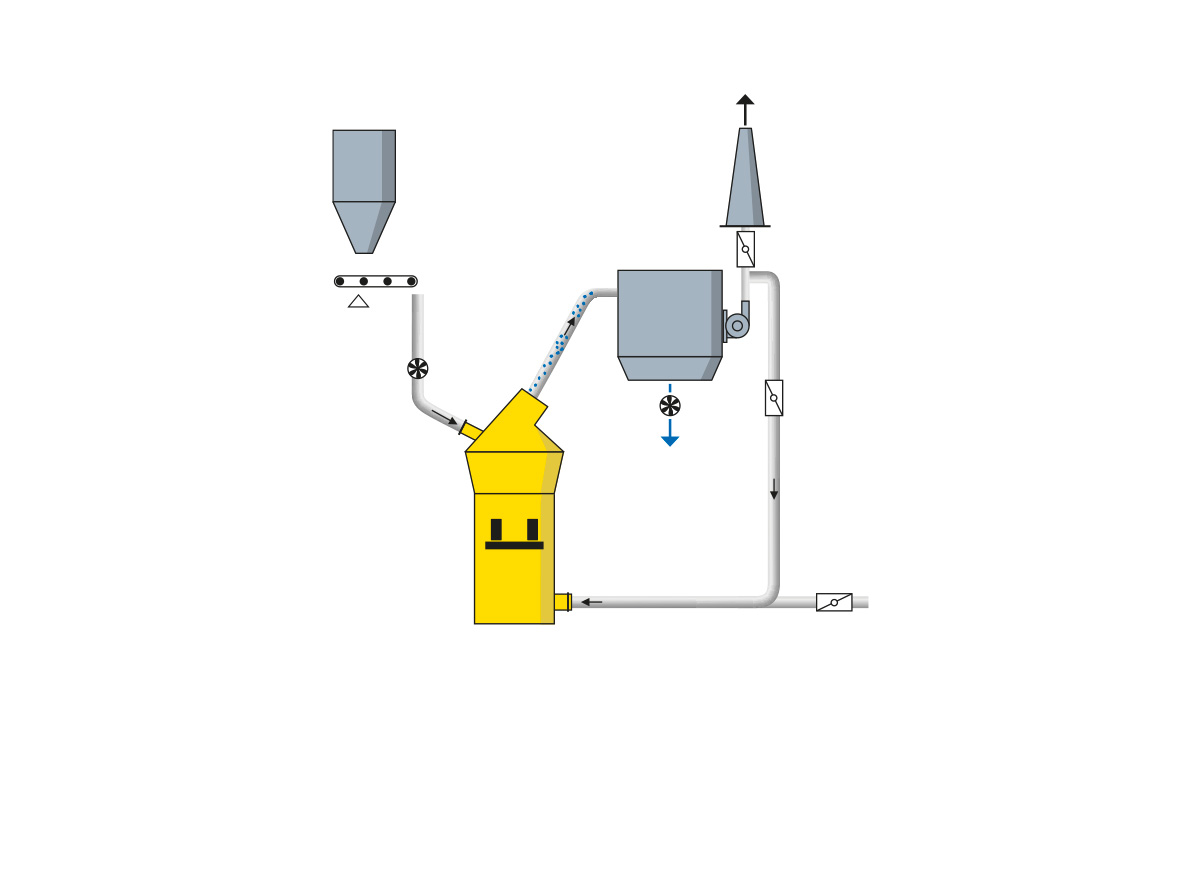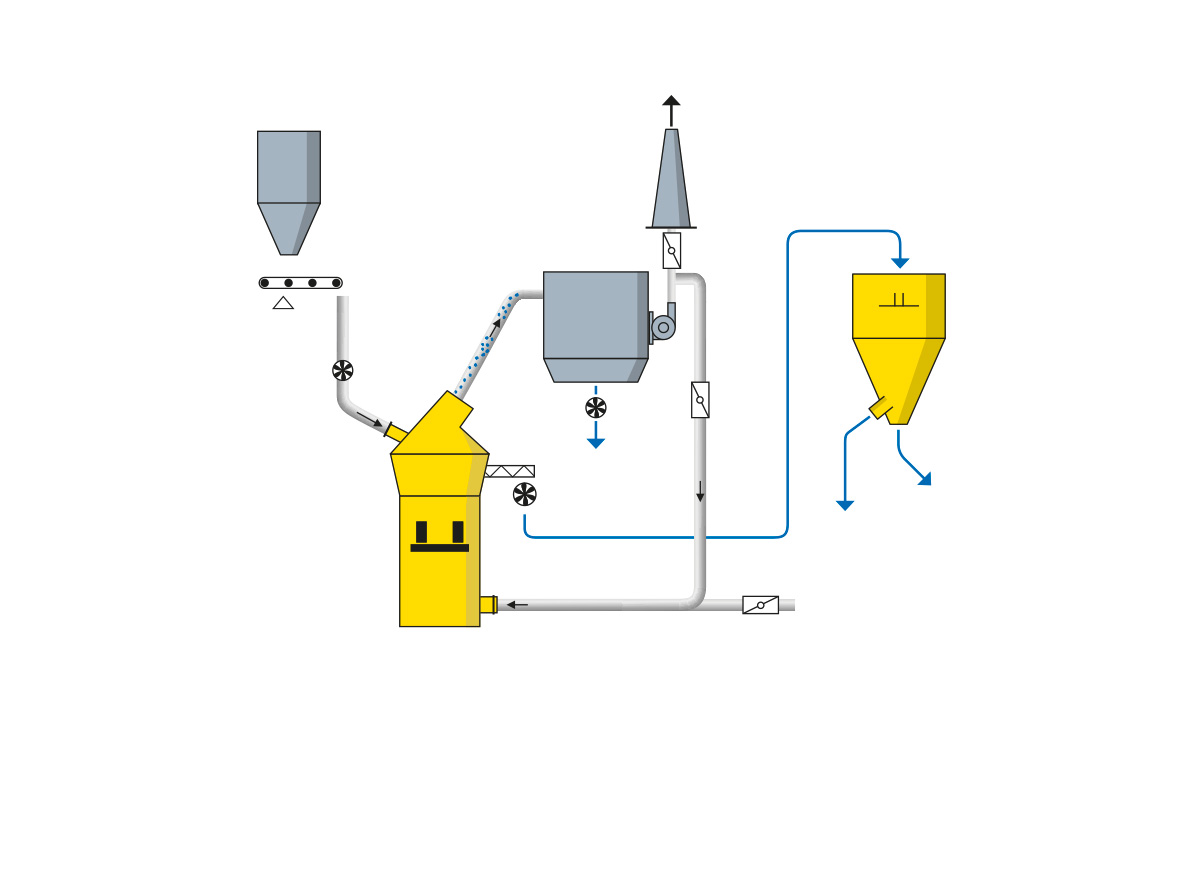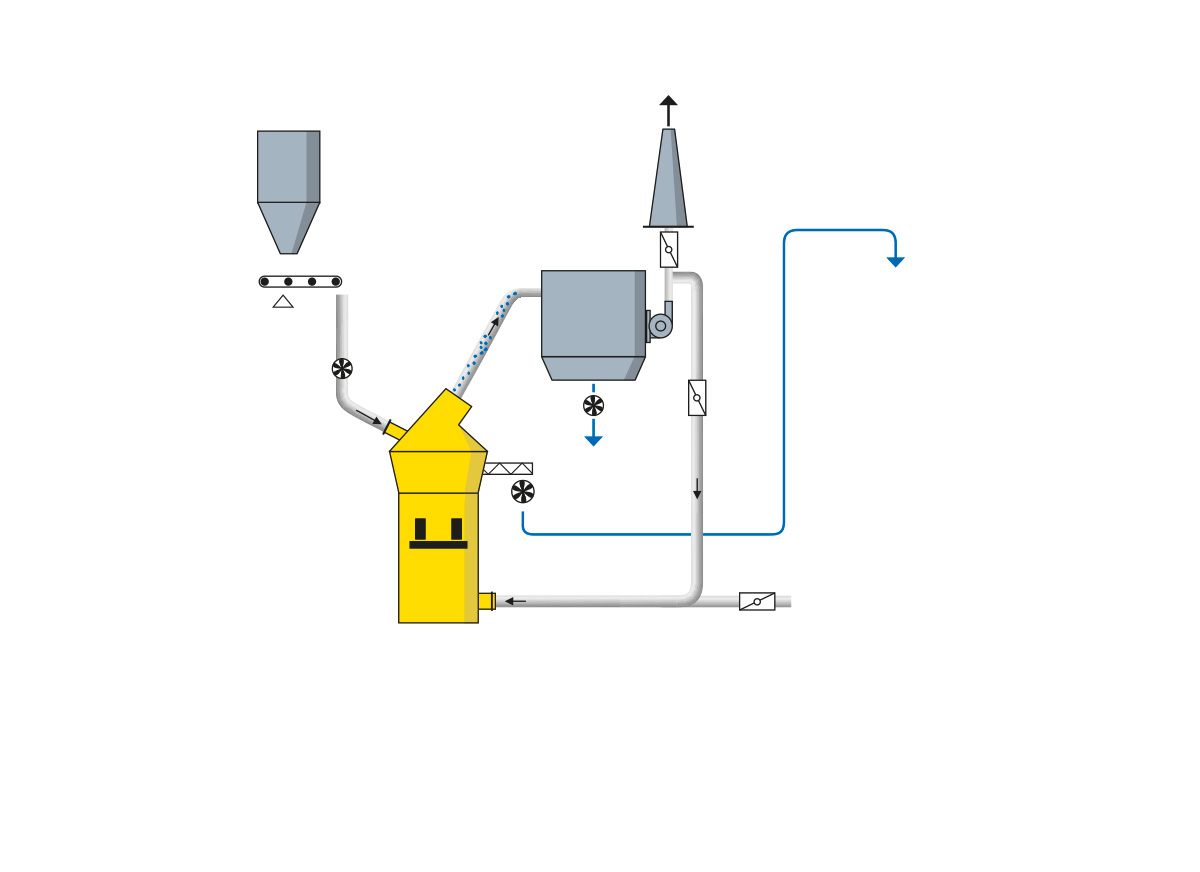Rock your recovery rate!
For the mining industry, the comminution process is a key process for breaking down ore. In the comminution step, the valuable minerals are freed from the surrounding host rock, which is a basic prerequisite for subsequent separation and concentration.
Pfeiffer has a long tradition of grinding a variety of minerals and ores. As early as the 1940s, these materials were ground in Pfeiffer mills and thus prepared for further separation processes. A new development in the mining industry, however, is dry grinding with Pfeiffer vertical roller mills. This advanced technology reflects the trend towards greater sustainability in mining and increases the efficiency of ore processing plants.
By using this highly efficient mill technology in mining, the exploitation of your minerals can now be improved through significantly more effective grinding for extraction of the metal. Vertical roller mills save energy, conserve resources and produce fewer unwanted fines in the ground product. Our vertical roller mills ensure that more valuable material is extracted from the ore more efficiently than is the case with conventional grinding plants.
In the vertical roller mill the particle breakage takes place in the gap between rollers and the rotating table. Comminution is achieved by compressive and shear stress on the particle bed; the surface contact between the particles distributes the stress in the grinding bed. With application of sufficient stress, micro cracks are generated. In the grinding bed are multiple contact points where pressure is applied on the particles. The mineralization in the hard parts in the ore is liberated. The opportunity for crack initiation is higher than that in a ball mill where mainly impact and shear stress is applied. The compressive comminution with an adjustable proportion of shear forces results in an energy-efficient size reduction with energy savings between 30 and 40% compared to ball mills.
Due to the comminution principle increased mineral liberation and micro cracks can be realized, resulting in increased recovery compared to conventional systems. A good example is porphyry copper deposits where mineralisation typically occurs along grain boundaries, where the comminution process leads to higher target mineral recovery even at coarser grind size. Such coarser grind size is then also suitable to facilitate the dewatering of tailings.
About the raw material
Ores are generally defined as metal-bearing minerals or mineral mixtures from which metals can be extracted in economically interesting concentrations. These include antimony, lead, iron, gold, cobalt, copper, manganese, nickel, silver, uranium, bismuth, tungsten, tin and zinc. Ores often occur in combinations, e.g. as lead-zinc-silver or iron-manganese ores. By using vertical roller mill technology, ores are optimally prepared for the subsequent stages of mineral processing, such as froth flotation, leaching and smelting. This allows you to get more valuable material out of your raw material.
Straight Grinding Mode

The feed material is ground in the mill by pressure and shear forces, whereby the grain size of the product is adjusted via the mill's classifier. The mill parameters are set depending on the liberation characteristics of the ore. The resulting product is separated from the process gases in the downstream filter. This mode is selected for applications requiring a uniform grind size across all feed material to achieve optimal grain liberation.
De-Sliming Grinding Mode

The feed material is ground in the mill by pressure and shear forces, whereby the grain size of the product is adjusted via the mill's classifier. The parameters of the plant are set so that the ultra-fines are removed from the product. The ultrafines are separated from the process gases in the downstream filter. The classifier reject (without ultrafines) is the grade material; it is extracted via a chute or a screw conveyor. If required, the product is separated into a fine and a coarse fraction in a downstream SUV separator. The ”de-sliming“ grinding mode applies to ores where the ultrafines contain low or nil proportions of grade material or where ultrafines are interfering with the downstream process. For example, clay material can be removed from the ore.
Selective Grinding Mode

The feed material is ground in the mill by pressure and shear forces, whereby the grain size of the product is adjusted via the mill's classifier. The mill parameters are set depending on the liberation characteristics of the ore. The resulting product is separated from the process gases in the downstream filter. In the ”selective“ grinding mode, hard material from the host rock that carries no grade is removed with grit extraction and the fines leaving the classifier are the liberated high-grade material. This mode uses the physical properties of the feed material.



